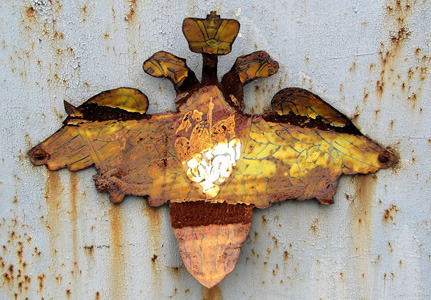
🗓️Friday, March 1, 2013
6:30 pm – 10:00 pm
FRANTS GALLERY SPACE
📍81 Wooster St, 4th fl, New York, NY 10012 USA
📧rsvp@frantsgallery.com
◆St. Petersburg Arts Project (NY) cordially invites you to attend the opening reception for “Up to Twelfth Generation” By: Alexander Terebenin◆
Up to Twelfth Generation
Photography of Alexander Terebenin is much like archeology, and his strolls though the city are akin to expeditions – inconspicuous; with neither fuss nor pose. The extraction is carried out openly, without gold miners’ sweat, pioneers’ vehemence or scientists’ zeal. Roaming round and about, melancholically dwelling here and now, the artist retains the time that flowed here and then.
Time is retained in things – shapes, surfaces, losses. In signs applied by people and half-obliterated by weather or adversity – or by repairs, senseless and merciless, much like weather and adversity. But also in signs applied by people and obliterated by people because they no longer think like this. Or because they do not think at all – it so happened.
Terebenin is an artist who elegizes oblivion. In his photographs, it is losses that speak louder than all. There are buildings that are forgotten and abandoned, boarded up, with blank windows, bricked-up doors and guttered walls. Windows impenetrably covered with ornaments of cracks, dirt and soot. Walls splotched with paint that is chapped, peeling and rot-damaged up to the twelfth generation. Utensils of obscure purpose that sit around in piles of rubbish. Steel and armor that are contorted, pulled apart and rusted out into holes. It is a landscape after the battle that was not waged by us, but lost by us it was.
And all this is ferociously beautiful. And all this could easily be understood as ready-made paintings, objects and installations that are subject to deferential contemplation and preservation. Squalor does not just eliminate the meaning of things – it changes it to the opposite.
On Terebenin’s photographs, shadows are more important than objects that cast them. Things are written off, forgotten, washed away. Things belong to history – to the temporal, fragile and precarious world of people. Shadows are distinct, monumental and geometrically correct. They belong to different orders – to the motion of the Sun and rotation of the Earth. At this time tomorrow, they will come back, and they will always come back. People will not. And objects, evidence of people’s life, will not either.
This simple rotation of meaning passes through the entire creative work of the artist. Terebenin is one of the few who are free from an obsession with the pompous and ridiculous idea of remaining in history. He is aware of its worth. His works could be illustrations to the Book of Ecclesiastes who also knew its worth. Do not take pride. Do not build fences. That is to say, to build them, but remember who you are and where you will come back. And you will not take anything with you from the fenced-in household.
Marina Koldobskaya